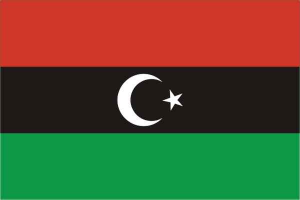Language/Libyan-arabic/Grammar/How-to-Use-Be
Hi Libyan Arabic learners! 😊
In this lesson, we will focus on "be" in Libyan Arabic. "Be" is an important verb that is used in many situations, so it's important to understand how to use it properly. This lesson is suitable for intermediate learners who already have a basic understanding of Libyan Arabic phrases and grammar.
Take some time to dive into these other pages after completing this lesson: Future Tense & Adjectives.
What is "Be"?
"Be" is a verb that indicates a permanent or temporary state. It can also be used to indicate an action in progress, or to form the passive voice. In Libyan Arabic, the verb "be" is usually translated as "كون" (koon).
How to Use "Be"
In Libyan Arabic, "be" is an irregular verb. Let's look at the different forms of "be" in the present tense.
| Libyan Arabic | Pronunciation | English |
|---|---|---|
| أنا كون | Ana koon | I am |
| أنت كون | Anta koon | You are (singular, masculine) |
| إنت كوني | Inti kooni | You are (singular, feminine) |
| هو كون | Huu koon | He is |
| هي كون | Hee koon | She is |
| نحن كونين | Nahnu kooniin | We are |
| إنتو كونوا | Intu konoa | You are (plural) |
| هما كونوا | Hama konoa | They are |
As you can see, "be" changes depending on the subject pronoun used.
Let's see some examples:
- Person 1: أنا كون طالب. (Ana koon talib) (I am a student)
- Person 2: هو كون طبيب. (Huu koon tabiib) (He is a doctor)
In these examples, we used "be" to describe someone's profession.
"Be" in the Passive Voice
We can also use "be" to form the passive voice in Libyan Arabic. To form the passive, we use the past participle of the verb with "be". Let's see an example:
- نبقة فالبيت. (Nbqaat f albeyt) (We stay at home) - Active voice
- البيت في يتنظف فالأسبوع. (Albeyt fi yatnazaf f alusbuu) (The house is cleaned weekly) - Passive voice
As you can see, we used "be" with "yitnazaf", which means "cleaned", to form the passive voice.
"Be" to Indicate an Action in Progress
We can also use "be" to indicate an action in progress in Libyan Arabic. Let's see some examples:
- أنا كون كتب. (Ana koon kateb) (I am writing)
- هو كون يشو فالشارع. (Huu koon yshu f ashshaa'ra) (He is walking on the street)
In these examples, we used "be" with the present participle of the verb to indicate an action in progress.
Conclusion
"Be" is a very important verb in Libyan Arabic. It can be used to describe a permanent or temporary state, to form the passive voice, and to indicate an action in progress. Make sure to practice these different forms of "be" and use them in conversations with native speakers to improve your Libyan Arabic skills.
To improve your Libyan Arabic Grammar, you can also use the Polyglot Club website. Find native speakers and ask them any questions!
➡ If you have any questions, please ask them in the comments section below.
➡ Feel free to edit this wiki page if you think it can be improved. 😎
Congratulations on finishing this lesson! Explore these related pages to keep learning: Pronouns & Plurals.

